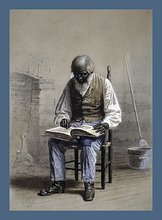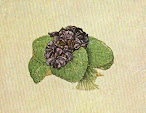This is a useful, thought-provoking book with the focus on the Student Non-Violent Coordinating Committee (SNCC), since the author was the SNCC staff photographer from 1962 to 1964. It has many photos that I have never seen before, readable copies of typewritten SNCC minutes, and the full uncensored speech of John Lewis before the 1963 March on Washington. The founding, work, and transformation of SNCC from an integrated student organization to one that no longer includes whites in any meaningful sense of the word is an extremely important thread. SNCC was the crucible of the entire shift in the African-American movement nationally. Lyons chronicles the SNCC story in a partially documented but also highly personal way, exposing his own vulnerabilities, thoughts, and doubts. Although the evolution of the organization is not truly illuminated in this book, important pieces of the puzzle are there. SNCC was an organization of courageous individuals--with Diane Nash one of the most courageous and leading others to muster their courage also. Lyons reports that when CORE shut down the freedom rides because of the level of violence perpetrated against them, Nash led SNCC to continue them, despite the danger. Perhaps because James Forman was his own protector within SNCC when agitation (from Marion Barry) began against his position as photographer, Lyons is unabashedly adulatory of Forman, for whom he also served as a "guy Friday." But to my mind, Forman (along with Moses) distinguishes himself in meetings, according to the minutes presented, by separating issues so they don't become a big ball of confusion, setting terms for debate, presenting an overview, or reminding everyone present of the core principles upon which the organization was based. He was also a tireless organizer. Forman was 10 years older than everyone else, and from the get-go evinced (from what Lyons says) a clear conception of how SNCC would garner support through projecting an image into the media and hence the rest of the world. Both he and Moses were school teachers and actual intellectuals--not so-called public intellectuals, but truth-seekers and from the North. Otherwise, Lyons notes, most of those who joined SNCC from the North were white, like him. Very close relationships developed among the core leaders of SNCC, the white leaders such as Bob Zellner, his wife Dottie Miller, Jane Jane Stembridge with the black leaders such as John Lewis, Julian Bond, Bob Moses, and Sam Shirah. All of these leaders were marked with extreme courage. Lyons notes: "That a descendant of the Confederacy [Shirah], a black Alabama farm boy [John Lewis], and a New York Jew were all living together said a great deal about what SNCC was like then."
SNCC was under attack in every battle, offices firebombed, leaders and members and local allies arrested and beaten. As founder Ella Baker, put it: "The whole concept of SNCC was to deal with the hard-core areas," with the idea that if segration could be broken in those areas, it would break everywhere else.
Their relation with SCLC was uneasy, but leaders in SCLC should have been able to see (and I do not know the degree to which they did) that both organizations were necessary and had a role to play. However, by 1964, after very difficult campaigns in Cambridge, Maryland, where Carmichael [apparently from this book] first emerges as a leader, and in Mississippi Summer in 1964, when many students came south for the summer to register voters and create a third party in Mississippi, a fear emerged. It seems that this fear was in part engendered by the fact that money for SNCC, which always ran on a tattered shoestring, had dried up. [Harry Belafonte was--continued to be?--a major funder]. SNCC members started to carry guns or keep guns in their homes, because they were afraid that the office or the place they are staying would be attacked. It is clear that SNCC felt extremely vulnerable. Lyons gives partial minutes of a meeting [the typewritten page] focused on violence. They talk about the need to keep tabs on everyone, because a member could be caught in a threatening situation and no one would know. One week after this meeting, Cheny, Goodman, and Schwerner were killed. These murders had a chilling effect on SNCC and demoralized the leadership. The angry, anti-white Carmichael emerges more and more as a leader, and takes over from Forman, who is also on the verge of total physical collapse. The fear turns to inward-looking paranoia. SNCC did not participate as an organization in Selma, although John Lewis went personally. The SNCC people in the area said that the march was a march toward certain violence, and Lyons notes that it was the last march of the civil rights movement that grew out of the local situation itself. The irony is that SNCC felt this intense pressure from all sides at the point that the movement was actually succeeding in the south.
Nevertheless, after the first Selma battle, Malcolm X was assassinated [he had gone to Selma] and Watts explodes in June[?]. The Carmichael slogan of Black Power overpowered the Meredith march. Lewis left SNCC because he opposed black nationalism. The civil rights movement hit the brick wall of the North, a different ballgame, and liberal support for the movement receded.
Lyons relates parts of the Peg Leg Bates SNCC meeting in December 1966 , in which, after most of the members had gone to bed, a vote was taken that prohibited whites from having any leadership vote or voting rights in the organization. Lyons says it was very unclear what happened at Peg Leg Bates or what the vote was, but it was impossible to overturn--because it is clear this is the current of the situation. By May 1967, SNCC is run by Rapp Brown, and soon it effectively self-dissolves into the Black Panther Party. Other SNCC leaders go their own way, many of them joining the anti-war movement.
The relation between the SCLC and SNCC is very important: the difference in philosophy, approach, and the way in which the victories and/or defeats of one affected the other. The Lewis speech needs to be studied and compared. The commitment of the original SNCC group to nonviolent confrontation--with both terms equally important--was crucial to the civil rights movement. Understanding the change of SNCC in detail is extremely important to understanding the problems of today.
Thursday, January 26, 2006
Subscribe to:
Post Comments (Atom)



1 comment:
I am preparing a presentation for my son's high school to encourage the students to talk to their parents about the importance, both historical and current of voting. I came across an old review of Lyons book in my files & thought Id get it--went to Amazon and found...ONE copy for $125! Googled it & didn't find much more (but I found you!) B & N finally have several copies starting from about $25, but I was reminded of the permissions & copyright imbroglio that has Eyes on the Prize unavailable. This to me is part of the next level of racial control--restrictions on information--that I try to coach my own students to prepare themselves to address. Let's remember that Zora Neale Hurston had dropped from public consciousness until Alice Walker rediscovered and promoted her. Thanks for keeping this volume alive.
Post a Comment